Now my marine voyage entering in more exciting, inshore sailing and busy ship traffic area.
We are leaving wonderful short stay in Leba. Say goodbye to Polish Border Guards and full steam towards Stralsund in Germany.
Leba- Stralsund.
Calculated distance 164 nautical miles ETA (expected the time of arrival) next morning after 8 a.m. to fit in Stralsund Gas Station working hours as stated in Navionics Navigation Software information base.
The weather was great, and cruising was enjoyable.
I never sail so close to the coast in this part of Baltic, so every time it is interesting to investigate new places. I was in the perfect mood but would not relax because of fishing activities around and found fishing nets entangled in the propeller could cause unwanted problems. I was forced to make many alternations of general course due to fishing gears as it usually happens on inshore navigation.
It was getting dark as we entered Stralsund approach channels. As I was updated navigation software, then sailing in rocky, but properly buoys marked route, was an easy task.
Both engines one by one stopped
And again in the narrowest place, directly on ferry way next test of my endurance happened. Both engines one by one stopped running exactly in the middle of the safe navigation channel, and the big marine tug was approaching just a cable astern of me.
I try to call on VHF channel 16 to warn him but no respond. In such a situation according to COLREG (International Regulations for Preventing Collisions at Sea) Rule 27, twoall-round red lights in a vertical line where they can best be seen has to be lit on. Unfortunately, my boat does not comply with this SOLAS rule and not any additional lights, except navigation lights was not equipped.
I switched on all available lights and with a searchlight try to warn the big tugboat. Luckily inertia and small breeze move us to the channel edge, and, the ghost-looking ship passed us some 20 meters away. After checking the position by GPS for boats and assuming the safe position, I dropped an anchor.
What happens? Fuel?
According to calculations and fuel gauges, at least, 100 liters, have to remain in tanks. Both engines simultaneously? Electronics? My worst expectations? Well, no one has the clue. Time 11 p.m. and phone call to professionals.
Advised to check and try to bleed AIR FROM DIESEL FUEL LINES AND FILTERS. I will not describe the whole procedure; you can read it here, just want to say that it was the cause of engine stops.
We released the air from the system then starting the engines but after a few seconds, both stopped again.
Executed air bleeding procedure again and realize that the only reason is the lack of fuel. I made a decision to use our spare fuel as distance to fuel pumps remains just about 5 miles. Started engines again, running smoothly, fuel indication about 200 liters. Gone to sleep till 6 a.m.
What was a cause, later on?
Running ahead, I’d like to say that I was met the same situation later and only then I started to look for the cause of the problem. What was a cause, later on?
Wakey- Wakey! Sunny, fresh morning, engines are puffing and with awakening birds screams around, we proceed to Stralsund fuel berth.
I made a phone call to the Pump Man (+49-3831-444978) to speed up refueling procedure. As soon as we ma
de fast to Stralsund City Marina berth, another 800 liters of diesel was filled into voracious engine tanks and spare cans. As my wealthy crew member left another € 1000 incash and not another boat was waiting for refueling, German guy allowed us to stay alongside for the next couple of hours. I made a small excursion to Old Town, very reminded me my native Riga and, after having delicious breakfast, we were ready to go.
Next stop Kiel- Holtenau, Baltic entrance to Kiel Canal.
Calculated distance 123 n.m. The first 15 miles’ tricky narrow navigation channel with maximum attention on dangerous rocks and sandbanks around so speed up to 10 knots. Made a short stop in designated pleasure craft anchorage to swim around and refreshing as Summer was in full force.
After leaving German mainland, we were entering busy ships traffic area – Fehmarn Belt, so keeping sharp lookout was imminent.
We passed offshore wind turbine farms with countless spectacular propeller fitted pins plugged into the seabed. I saw it before but not so close. Impressive sight!
Very busy traffic including ferries, huge tanker ships, and various pleasure crafts, but I like it, not boring at least. We arrive, to Kiel Canal entrance Kiel-Holtenau about at 6 p.m., and I supposed to cover the first half of the Canal until dark. No navigation for pleasure crafts after 9.30 p.m. at this date.
Very fast, with a company of other four sailing yachts, we entered in locks. Run upstairs to Lock Operator to pay a canal fee €18 and in about half an hour not exceeding speed limit 15 km/h over the ground (Canal Rules) we enjoyed wonderful views of perfect German landscapes and villages.
I was not transiting Kiel Canal the first time. I have two canal passages on the board of bananas carrier reefer ship as the second and chief officer in mid 90ies. Then I did nothing. Kiel Canal Pilot and two Helmsman executed whole navigation. Ships Master and his mates, like me, just control pilot’s orders and time to time manually change the vessel’s speed.
Now, I have no any others help, just me and my knowledge or lack of them. Constantly checking to not speeding up and keeping a sharp lookout to other ships and boats traffic.
Luckily Today is not lack of information which could be easily obtained on the internet, so I was well informed about Kiel Canal Transit Rules for pleasure crafts as well.
To finishing this post, I decided to make a stop in Marina Winter Lager. Well equipped yacht harbor with showers, laundry, freshwater, AC/DC and refueling facilities. As for pleasure crafts, navigation in the canal after 9.30 p.m. was prohibited, we made fast to Marina pontoons and took a rest.
To a little intrigued you on my next adventure, I have to say that made the mistake that did not refuel here. About it on next post.
![IMG_1752[1] | GPS Navigation Systems IMG_1752[1]](https://gpsnavigationsite.com/wp-content/uploads/2016/04/IMG_17521-300x169.png)
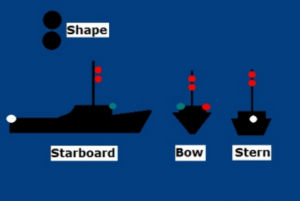
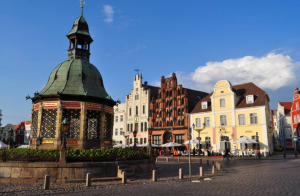
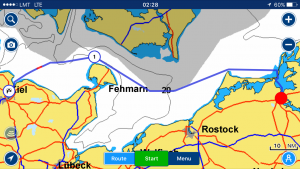
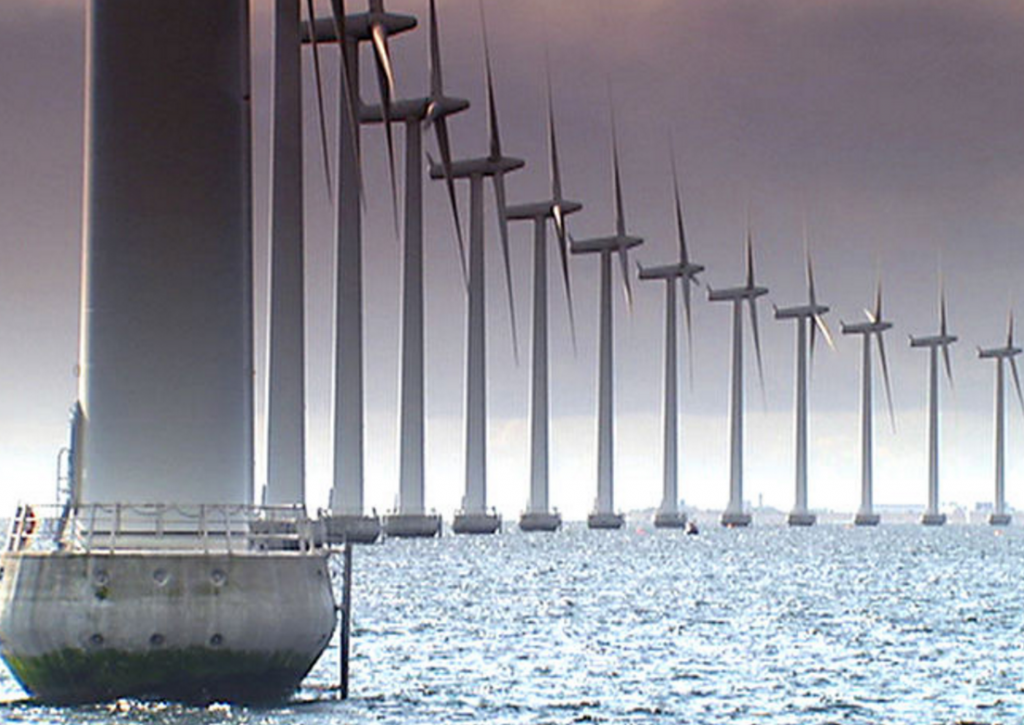
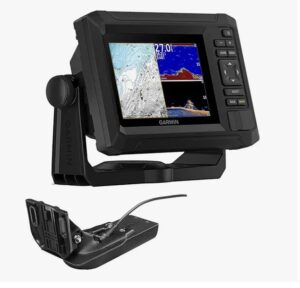
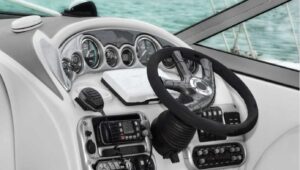
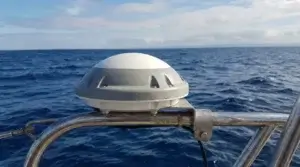
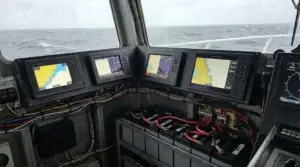
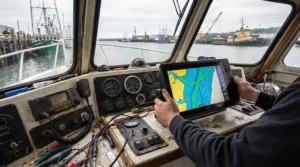
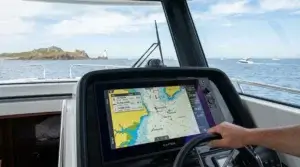
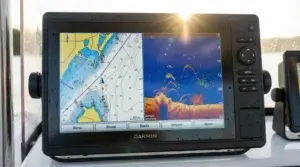
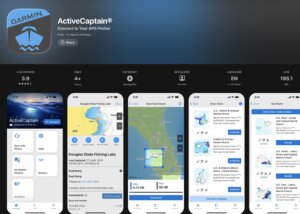

Hi Andrejs,
I was on the edge of my seat reading about your inshore sailing adventure. We have a twin diesel engine 40′ Heritage Sundeck Trawler and plan to move aboard next year and cruise the American Great Loop. My worst fear is experiencing inexplicable mechanical failure while underway. Sounds like you handled yourself just fine and I’m glad to hear that your engines restarted and you were able to refuel. Here’s to your happy and safe continued cruising. Do you have pictures of your vessel?
Alyssa
Thanks for the comment and I am glad you, at least, read my post.
Could you explain what is American Great Loop. I am very interested in such kind of information. I do not think that ever sail on the boat in America, but the experience of other skippers is always worth gold.
I will post my boat pics somewhere in my posts and Youtube video either.
Andrejs